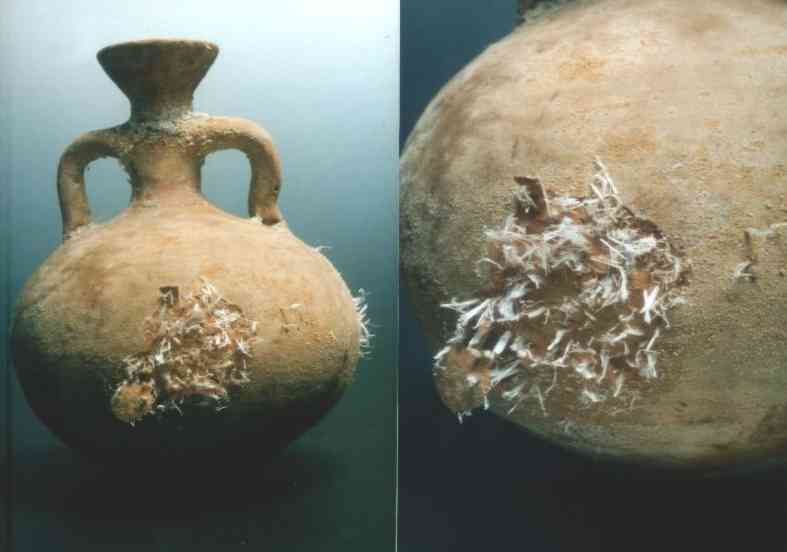
ABSTRACT
When conservators are confronted with ceramics contaminated with salts, it is practically impossible for them to identify the salt contaminants present. And yet it is essential information to determine the kind of treatment and still more important to determine what will be the best environmental conditions for its later conservation.
Acid induced salts are even more complicated and many contain phases that are still unidentified. Their growth can be rather slow, but their action most destructive since most have hydrated forms. Moreover, the acid acts throughout the body of the ceramic and decomposes the calcite present.
Desalination is no longer believed to be the best treatment for salt contaminated ceramics. But on the other hand, there are not yet enough data available on the properties of these salts and their behaviour in complex mixtures of salts, to be able to determine the ideal relative humidity.
Several scientists are studying the properties of these salts, but they often lack the confrontation with the salts on the objects themselves. Conservators are eager to learn more about the problem to be able to choose the best treatment for the conservation of the object on a long-term basis. Curators will want to know what are the best preventive measures to be taken, at a reasonable cost.
For the sake of our heritage, it is absolutely necessary to work together and exchange our thoughts and experiences.

Lieve Halsberghe
15, rue de Bivange
L-3395 Roeser
G.D. Luxemburg
e-mail: lievehalsberghe@hotmail.com
[ Page up ] [ IAP Group homepage ] [ Main IAQ in Museums homepage ] [ Search site ]
Indoor Air Quality in Museums and Archives
© December 15th, 2001